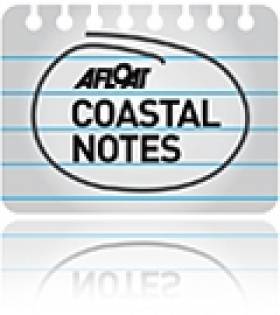Displaying items by tag: Árainn
Oileáin Árann Island Folklore Collated on Dedicated Website
The island folklore of Oileáin Árann has been collated on a new website by residents of Inis Mór, working with a number of academic partners.
Bailiúchán Béaloidis Árann, the Árainn Folklore Project, has been “more than twenty years a-growing”, according to the project’s digital curator, Deirdre Ní Chonghaile.
The website includes hundreds of photographs and over 100 audio recordings, as well as some videos collected over the past two decades.
All of these are enriched with detailed information, identifying the individuals and places appearing in them, she says.
The website’s search capacity extends to a variety of elements, with transcriptions written by island women accompanying the sound recordings of interviews.
 ailiúchán Béaloidis Árann, the Árainn Folklore Project
ailiúchán Béaloidis Árann, the Árainn Folklore Project
Bailiúchán Béaloidis Árann is the only major collection of island folklore to be created by Inis Mór islanders themselves, Ní Chonghaile says.
Over many years since 2000, Bailiúchán Béaloidis Árann has earned support from major figures of the Aran canon, including photographer Bill Doyle, writer and cartographer Tim Robinson, and linguist Dr James Duran, she says.
It has also produced “two fine books”, Árainn: Cosáin an tSaoil (2003) and Ár nOileán: Tuile is Trá (2004), she says.
Bailiúchán Béaloidis Árann had two primary objectives: to preserve island folklore for future generations of islanders; and to ensure that the islands’ folklore would be accessible. The new website “enables islanders to combine those two objectives”, Ní Chonghaile says.
Collaborators on the project are Gaois, Fiontar and Scoil na Gaeilge, Dublin City University, and the National Folklore Collection at University College Dublin, the co-creators of the website dúchas.ie.
Funders included the LEADER scheme, the Heritage Council of Ireland, and the local co-op Comharchumann Forbartha Árann.
“Though the entire collection awaits a permanent home at home in Árainn, we remain hopeful its day will come. In the meantime, people will savour and delight in this new resource, which demonstrates so well the faith and creativity of the women who created,” she says.
The website was formally initiated by Dr Críostóir Mac Cárthaigh, director of the National Folklore Collection, in Kilmurvey House on Árainn on Friday (Jan 6).
Economic Development of the Islands – Minister Launches Report
The Minister for Community, Equality and Gaeltacht Affairs, Pat Carey, T.D., has announced the launch of a report on the employment needs and the economic development potential of the islands. The economic consultants, FGS Consulting, were commissioned by the Department of Community, Equality and Gaeltacht Affairs to compile the report under the direction of a steering committee made up of representatives from Comhar na nOileán, Údarás na Gaeltachta and the Department itself. The report's recommendations relate to the following areas:
- Issues related to the cost of living and to improving the islands' infrastructure;
- Cost factors that prevent the establishment and operation of commercial enterprises on the islands;
- The islands' development potential and the employment needs of island communities;
- Recommendations regarding further targeted support measures which would be aimed at the promotion of sustainable development and job creation; and
- The costs and advantages relating to any of the new measures recommended to support investment.
Minister Carey said that the Department would use the report as a basis for the development of further policies in relation to the islands in the coming years and that he hoped that some of the recommendations could be put in place in the short term at very little cost. He said, "We now intend to carry out a further examination of the various recommendations made in the report in consultation with other relevant Departments and state agencies to establish the most practical method of implementation."
A copy of the complete study is available on the Department's website www.pobail.ie.
Further Information:
The following is a list of the islands which were included in the study:
Island County Population
Toraigh Donegal 142
Árainn Mhór Donegal 522
Clare Island Mayo 136
Inishturk Island Mayo 58
Inishbofin Galway 199
Árainn Galway 824
Inis Meáin Galway 154
Inis Oírr Galway 247
Bear Island Cork 187
Sherkin Island Cork 106
Cléire Cork 125





























































